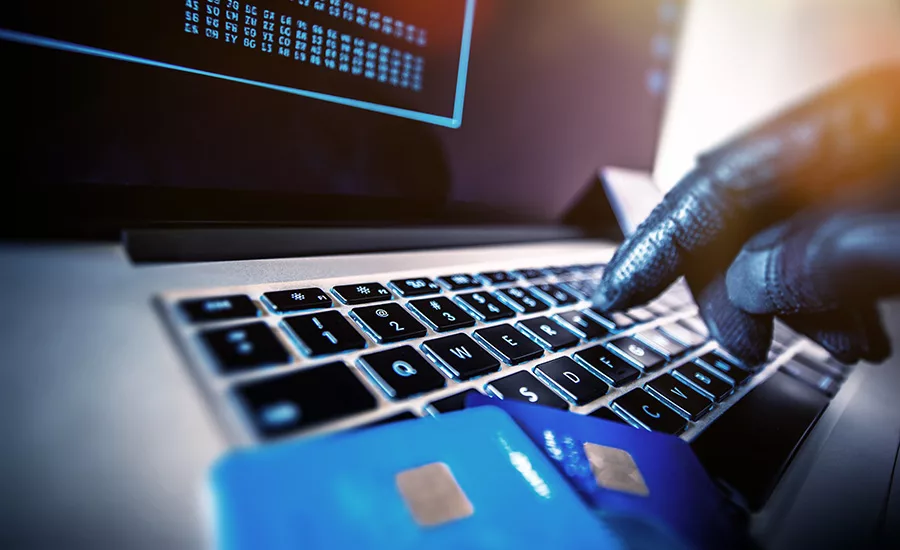5 fraud predictions for 2021 and beyond

With the growing threat of fraud fueled by the digital acceleration that took place in 2020, Experian released its 2021 Future of Fraud Forecast that reveals five emerging fraud threats facing businesses.
The rapid increase in digital use created a perfect storm for fraudsters to quickly find new ways to steal funds, capitalizing on consumers’ lack of familiarity with digital platforms and the resource constraints faced by many businesses. In fact, from January 2020 to early January 2021, the Federal Trade Commission released that consumers reported over 275,000 complaints resulting in more than $210 million in COVID-19-related fraud loss.1 Because of this, it’s critical for businesses to anticipate potential new fraud schemes to prevent losses and protect customers.
To help businesses prepare for fraudulent activity in 2021, Experian’s Future of Fraud Forecast highlights five fraud threats businesses should be aware of this year:
- Putting a Face to Frankenstein IDs: Synthetic identity fraud – when a fraudster uses a combination of real and fake information to create an entirely new identity – is currently the fastest growing type of financial crime. The progressive uptick in synthetic identity fraud is likely due to multiple factors, including data breaches, dark web data access and the competitive lending landscape. As methods for fraud detection continue to mature, Experian expects fraudsters to use fake faces for biometric verification. These “Frankenstein faces” will use AI to combine facial characteristics from different people to form a new identity, creating a challenge for businesses relying on facial recognition technology as a significant part of their fraud prevention strategy.
- “Too Good to Be True” COVID Solutions: With the distribution of vaccines underway and wider availability of rapid COVID-19 testing, Experian expects that fraudsters will continue to find opportunities to capitalize on anxious and vulnerable consumers and businesses. Everyone needs to be vigilant against fraudsters using the promise of at-home test kits, vaccines and treatments as means for sophisticated phishing attacks, telemarketing fraud and social engineering schemes.
- Stimulus Fraud Activity, Round Two: For Americans suddenly out of work or struggling with the financial fallout from the pandemic, 2020’s government-issued stimulus funds were a welcome relief, but also an easy target for fraudsters to commit scams. Experian predicts fraudsters will take advantage of additional stimulus funding by using stolen data from consumers to intercept stimulus or unemployment payments.
- Say ‘Hello’ to Constant Automated Attacks: Once the stimulus fraud attacks run their course, Experian predicts hackers will increasingly turn to automated methods, including script creation (using fraudulent information to automate account creation) and credential stuffing (using stolen data from a breach to take over a user’s other accounts) to make cyberattacks and account takeovers easier and more scalable than ever before. With billions of records exposed in the U.S. due to data breaches annually, this type of fraud will prosper in 2021 and beyond until the industry moves away from its reliance on usernames and passwords.
- Survival of the Fittest for Small Businesses: As a result of COVID-19, businesses were left with no choice but to quickly shift to digital to meet the needs of consumers, and some were more prepared than others. In 2020, consumers may have been willing to give businesses time to adjust to the new normal, but in 2021 their expectations will be higher. Experian predicts businesses with lackluster fraud prevention tools and insufficient online security technology will suffer large financial losses in 2021 and beyond.
“Fraud is complex and our predictions show that businesses and consumers need to be vigilant in 2021 as fraudsters become more sophisticated,” said Kathleen Peters, Chief Innovation Officer at Experian Decision Analytics in North America.
To download the Future of Fraud Forecast, visit https://www.experian.com/future-of-fraud-forecast.
Looking for a reprint of this article?
From high-res PDFs to custom plaques, order your copy today!






